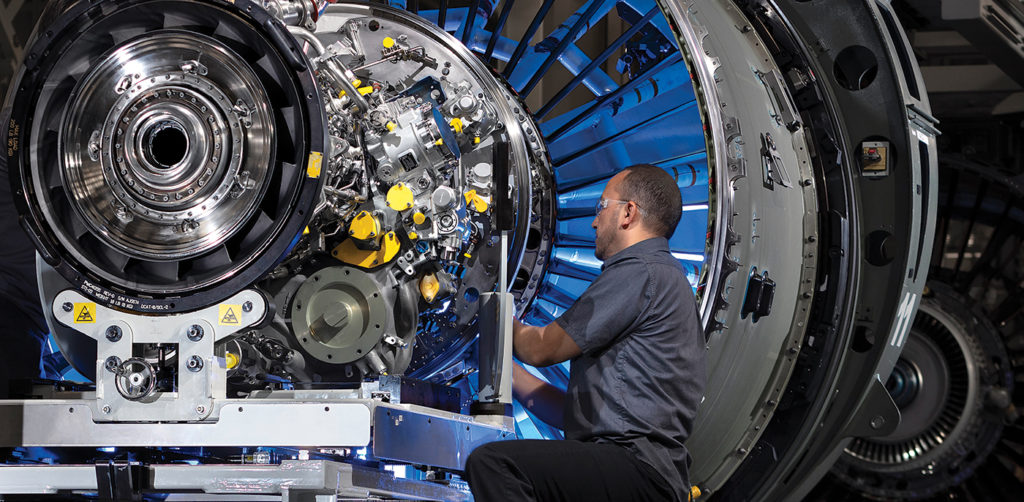Estimated reading time 8 minutes, 25 seconds.
When the Aerospace Industries Association of Canada (AIAC) unveiled Vision 2025 in June 2019, the report offered a roadmap to a competitive future for Canada’s aerospace sector. Nine months into a global pandemic and its 27 recommendations have never been more relevant.
But attracting the attention of a government confronting a ballooning deficit, as it attempts to restart the economy and roll out a vaccine campaign, will prove difficult. Still, Lee Obst can see opportunity in the current crisis.

Obst, the country lead for Collins Aerospace, assumed the chair of AIAC’s board of directors in November. He takes the helm at a time when the ripple effects from grounded aircraft and reduced commercial traffic are being felt by almost every facet of the sector, from production, to maintenance, repairs and upgrades, inspections, and support services.
While other countries have made dedicated investments to shore up their aerospace sectors, Canada has yet to announce any specifics. The fall fiscal update contained measures for building a national green economy and for workforce skills and training — both areas highlighted in Vision 2025 — but there was little specified for aerospace, aside from funding allocated for airport health and safety infrastructure.
“Although many in political leadership have advised us that support is coming, we are nonetheless disappointed that it is taking so long,” Jim Quick, AIAC president and CEO, said in a statement. “We have been told that our recommendations and advice are appreciated and we will continue to press the government to announce the support as soon as possible.”
To do that effectively, Obst, a former Royal Canadian Air Force fighter pilot and test pilot, wants to ensure the sector is speaking with a unified voice. His top three priorities over the next 12 months include increasing the effectiveness of AIAC’s message, building consensus among industry for next steps, and advancing a national aerospace strategy that is in line with government’s recovery plan.
The Vision 2025 report was developed in consultation with the federal and provincial governments, and offered recommendations around six core themes to ensure Canada’s place as a leading aerospace competitor: expanding the skilled workforce; growing small- and medium-sized enterprises (SMEs); promoting innovation; investing in Transport Canada’s aircraft certification and regulation capacity; sustaining Canadian leadership in space; and better leveraging defence procurement to drive industry growth
More recently, AIAC commissioned a comparative report by consultants Roland Berger to better understand how other jurisdictions are supporting and advancing their aerospace interests. The report was presented to government during a virtual event on Parliament Hill and further underscored the economic impact of aerospace: around 235,000 jobs, roughly $28 billion in GDP, and an industry leader in research and development investments.
“We are not looking for a bailout,” Obst insisted. “We are looking more for a partnership with government similar to what is done in other countries and jurisdictions to allow us to compete globally.”
In fact, Vision 2025 and the Roland Berger reports were delivered with the intent of helping the government understand that it, as much as industry, is in competition with other jurisdictions. “If you want to retain high-skilled jobs and you want to attract and retain foreign investment and original equipment manufacturers (OEMs) and Tier 1 suppliers, you need to compete for that against jurisdictions that are making those investments,” he noted.
As the aerospace sector makes further headway with green aviation and invests more in automation, artificial intelligence and advanced materials, Obst sees an opportunity to merge industry and government agendas. “These are technical challenges that industry can and will solve. The question is, where are those investments going to be made? Is Canada going to be part of that or are we going to be commodity providers and a consumer of the results?”
“We need to plan for what is next,” he added. “What are the specific projects we can promote and partner to bring those solutions forward? We recognize there are other priorities governments are trying to balance, so we need to be effective in our ask and make sure that what we are doing is right not just for our industry, but for the country.”
Making priorities
Obst’s first priority is to maximize the effectiveness of AIAC and its board of directors, which is a large and diverse board with members from OEMs to small tier three suppliers representing every region of the country. Without regular face-to-face meetings for the foreseeable future, can the board do more to keep aerospace on the government’s radar? In November, AIAC hosted a virtual Week on the Hill that attracted around 700 Members of Parliament, provincial ministers, government officials and industry members.
“One of my goals in this Zoom world is, how do we further enhance our messaging, diversity of thought, and inclusion that is required as we make our plans and strategies?”

Related to that, he wants to build consensus within the membership on strategies outlined in the Roland Berger report to collaborate with government. Initiatives around green aviation, advanced manufacturing, and automation may require large companies to lead, but they need to include smaller innovative companies, some of which are outside the aerospace sector.
Obst’s third priority is to continue the board’s work advocating for a national aerospace strategy and ensure it fits within a government recovery plan. A recent AIAC survey found almost 75 per cent of member companies had already, or were expecting to lay off employees as a result of the pandemic. The sector had a skills shortage before the pandemic, he noted, and layoffs will only intensify that. “As part of the pandemic recovery, how we attract and retain those skills in the workforce is going to be critically important to our overall success,” he said.
It’s not clear when government support for the sector might be announced, but Obst doesn’t want to wait. Canadian companies need to be well positioned as commercial aviation begins to ramp back up in the New Year, he said.
“We need to get engaged and ready for the return to flight. What does that mean? There are probably improvements to our airport infrastructures that are required, touchless check-ins and automation, for example. There’s also going to be the preparation of a large number of aircraft that are currently parked. That may require inspections or other preparation for flight. I would like to see that work for the Canadian carriers – and as many others as possible – stay in Canada and support our own MRO industry.”
Obst most recently led AIAC’s technology and innovation committee, and believes the sector must establish a framework with government for initiatives like sustainable aviation; alternative fuels; hybrid and electric aircraft; urban air mobility and greater digitization of communications between aircraft; ground infrastructure; and airlines.
“There are some major investments around the world in those areas already,” he noted. “These are challenging problems and require us to pull together and create that framework as opposed to asking government to just create it for us.”
Canada does not necessarily need to lead in all areas, “but we need to be part of those solutions moving forward.”








